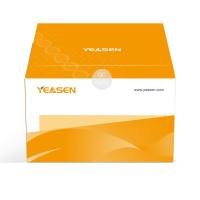Furovirus Isolation and RNA Extraction
互联网
519
The Furovirus (fu ngus-transmitted ro d-shaped) group, whose type member is soil-borne wheat mosaic virus (SBWMV) (1 ), is a very heterogeneous group infecting a wide variety of hosts. The group consists of viruses that are naturally transmitted by soil-borne fungal vectors, generally of the family Plasmodiophorales. Virions are rigid rods and contain two or more genome components consisting of positive-sense RNA. Furoviruses typically infect roots, but can also invade, or be inoculated to, leaves. As sequence data for different furoviruses has become available, it has become clear that there are significant differences in genetic organization within the group (2 ,10 ). We find it convenient to divide the viruses into two major subgroups (Fig. 1 ), which are distinguished by the nature of the protein(s) putatively involved in cell-to-cell movement. Subgroup 1 consists of SBWMV, which appears to have a movement protein (MP) of the type characterized by the 30-kDa protein of tobacco mosaic virus (TMV) (6 ). Subgroup 2 furoviruses (beet necrotic yellow vein virus [BNYVV], peanut clump virus [PCV], and potato moptop virus [PMTV]) do not have a TMV type MP but instead possess a cluster of three slightly overlapping genes known as the triple gene block (TGB), which has been shown for BNYVV (11 ), and is presumed for the other viruses (7 –9 ) to mediate viral cell-to-cell movement.









